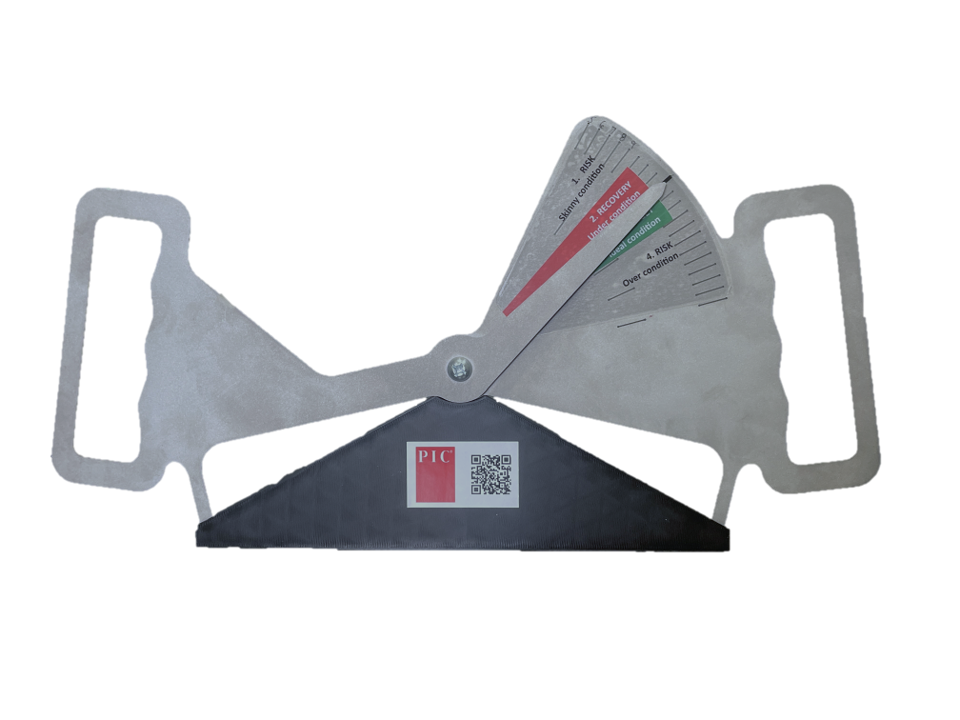Understanding pig behavior is a key to successful, low-stress pig management. Most pig behavior (both normal and abnormal) is related to the animals’ natural, survival instincts.
Pigs are social animals. They’re curious, have a good memory and exhibit herd tendencies. For example, a pigs’ normal response to a perceived threat is find a larger flight zone. Without a clear escape route, pigs tend to circle to keep a perceived threat in sight and at a distance.
What is an abnormal behavior? It’s the result of the lack of harmony between the pig and its environment. Many factors can influence pig behavior, and addressing these challenges often requires a variety of initiatives. Here are 5 tips to help you distinguish normal pig behavior from abnormal behavior:
Make time to observe. It’s essential to spend time with your animals to fully understand their natural behavior. As part of you daily routine, stand in each room, and watch all the pigs, from their feeding and drinking patterns to the way they interact with other pigs. Don’t rush this process, you’ll be amazed at what you learn. PIC recommends:
- 1 labor hour per 500 nursery-aged pigs, especially during the first 10 to 14 days
- 1 labor hour per 1,000 pigs at the finishing stage.
When you’re not in the barn, live footage from video cameras inside the barn can also give you valuable insights into pig behavior.
Understand feeding patterns. Feeding patterns can change as seasons, social hierarchies, and environments change. Understanding and recognizing these changes will help you understand pig behavior and needs.
Seasonal patterns: Pigs tend to eat consistently through the day in the winter. In the summer, pigs tend to rest during the heat of the day and eat at night and in the early morning.
Social patterns: Pigs are social creatures and create hierarchies for access to valuable resources like water, food and resting space. This hierarchy impacts when and how pigs eat throughout the day.
Environment and hierarchy interactions: How often are feed outages occurring in your barns? Even if it’s just a 30- or 60-minute outage, what if it happens when the pig ranked 25 in the hierarchy approaches the feeder? He or she will be pushed aside by more dominant pigs when more feed arrives. IC recommends:
- Minimizing feed outages to ensure all pigs get proper nutrition.
- Linear feeding space per pig:
- 1.0 inch (2.5 cm) for nursery pigs 0-60 lb (0-27 KG)
- 1.88 – 2.0 inches (4.7-5.0 cm) for grow-finish pigs 60 lb (27 kg) to market weight
- Observe your pens to determine if you have enough feeder space, so all the pigs can access the feeder multiple times a day.
- Linear feeding space per pig:
Provide enough space to help manage aggression.
Most pig behaviors are natural and non-aggressive, like the tendency to root and scavenge. These behaviors manifest in a confinement setting when pigs nose each other’s bellies. This doesn’t mean the animals are picking on each other; they’re expressing natural behavior. Pigs need to have the opportunity to be social with each other.
On the other hand, gang aggression is a negative behavior that occurs when multiple pigs attack the lowest-ranked pigs in the hierarchy. This behavior is typical in the wild, not just in confinement. If an animal does not have enough space to get away from other animals trying to establish dominance, aggression is difficult to stop.
PIC recommends staying above 7.0 to 7.1 square feet per pig in each pen. If square-footage drops below this threshold, negative pig behavior may increase. Review vital space recommendations in the PIC Wean-to-Finish Guidelines.
Beware of tail biters. Tail biting can arise in a confinement setting. It’s not uncommon for tail biters to be smaller pigs that may not be getting enough resources (including feed and water). What can you do about tail biters?
Once you identify the tail biter:
- Try moving this pig to a different pen, cull it early, or market some of the other pigs in the pen earlier to alleviate stocking pressure.
- Remember that pigs tend to pick on pigs that are different. Keeping tail sizes consistent helps manage tail biting.
Control the controllable. Keeping pigs in the proper thermoneutral zone (not too hot, not too cold) helps limit negative pig behaviors. Ensure proper airflow in the barn. Also, control drafts (from a hole in the barn curtain, for example) to prevent pigs from getting chilled.
Help pigs thrive
It’s easy to be off just a little bit on a variety of critical factors that impact pig behavior, from adequate nutrition to proper stocking rates to the right barn temperature. Being off slightly on multiple factors, can compound issues and contribute to abnormal pig behavior.






